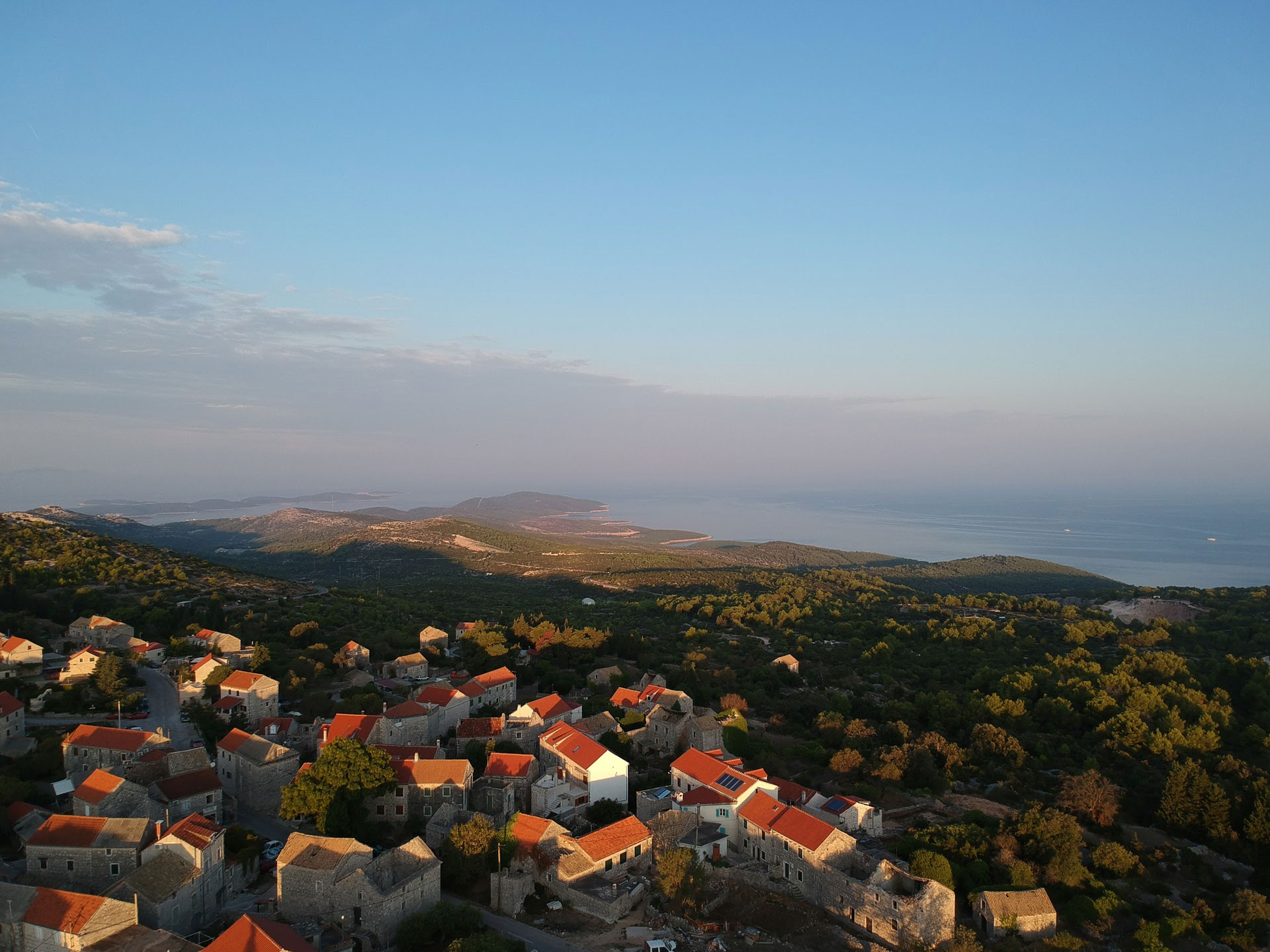Brusje, island of Hvar

Brusje
On the slopes, two hundred meters above the sea, with a view that encompasses “everything” and just 7 kilometers from the town of Hvar, lies Brusje, where everything started with shepherds’ huts back in the 16th century. Returning to the town of Hvar every day during the period of milking sheep and making cheese wasn’t as difficult as it was tiring at the end of a shepherd’s workday. Spending the night shortened the morning return and provided time to watch and organize the shepherd’s flock and agricultural activities. The memory of the work remains, but it is more beautiful when viewed and pondered.
The ruins of two summer houses, not by the sea but up where everything can be seen, speak of the miraculous motive of the tranquility of watching and observing, an outward discovery of oneself, a “reversed” motive of presence compared to Mali Grablje. Resistant to the temptations of “openness,” about 400 inhabitants of Brusje still live, watch, and enjoy, breathing in lavender and rosemary that no wind can drive away from the surrounding air. Small places are known for “great people,” making them even more valuable. The value of the view that each inhabited place “has” can be discovered through the spirit, atmosphere, and soul of the locals, which in Brusje transcend the passerby into the “third dimension.” Brusje was the birthplace of the great Croatian painter Ivo Dulčić, and we can only remember his famous oil-on-canvas painting “Uvala Stiniva.”
The beautiful Brusje bays and surrounding areas like Lozna, Zastupac, and Jagodna are also places where you can be served, spend the night, or stay for a while. The culmination of it all is the bay of Parja, where the “Neolithic” Mark’s Cave is located, the source of “humanity” and the nursery of Hvar’s Neolithic culture.







